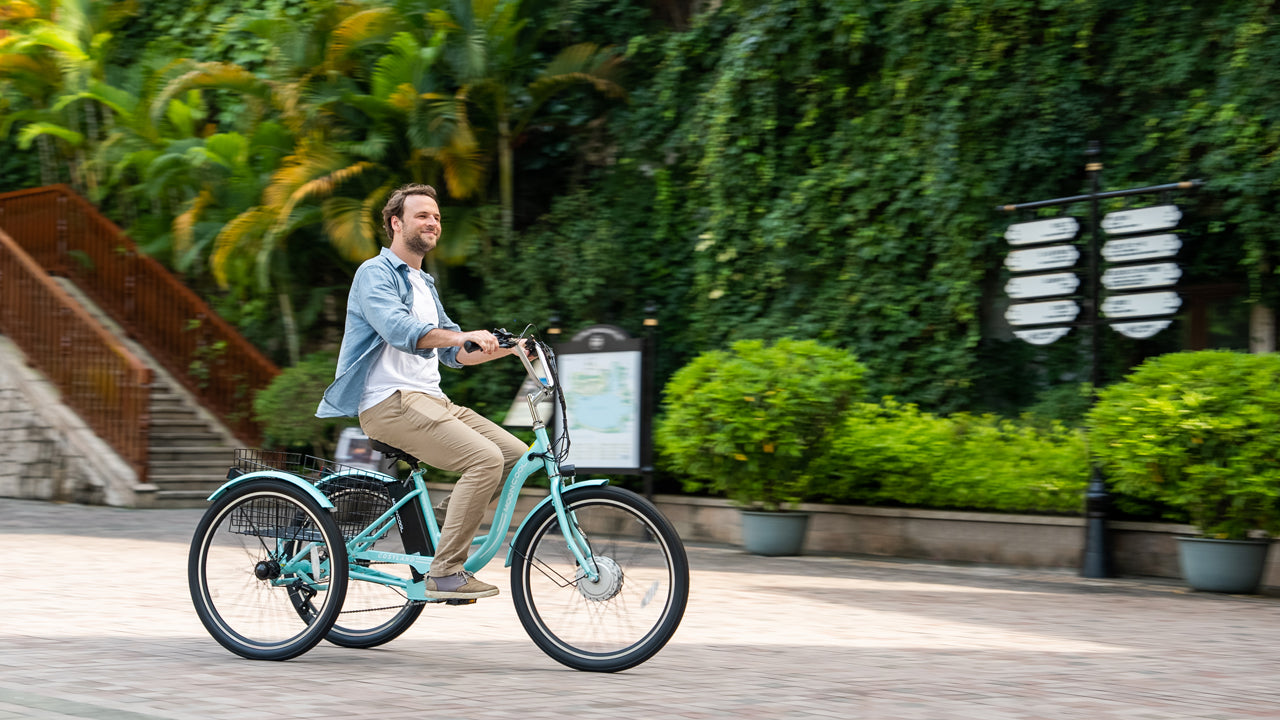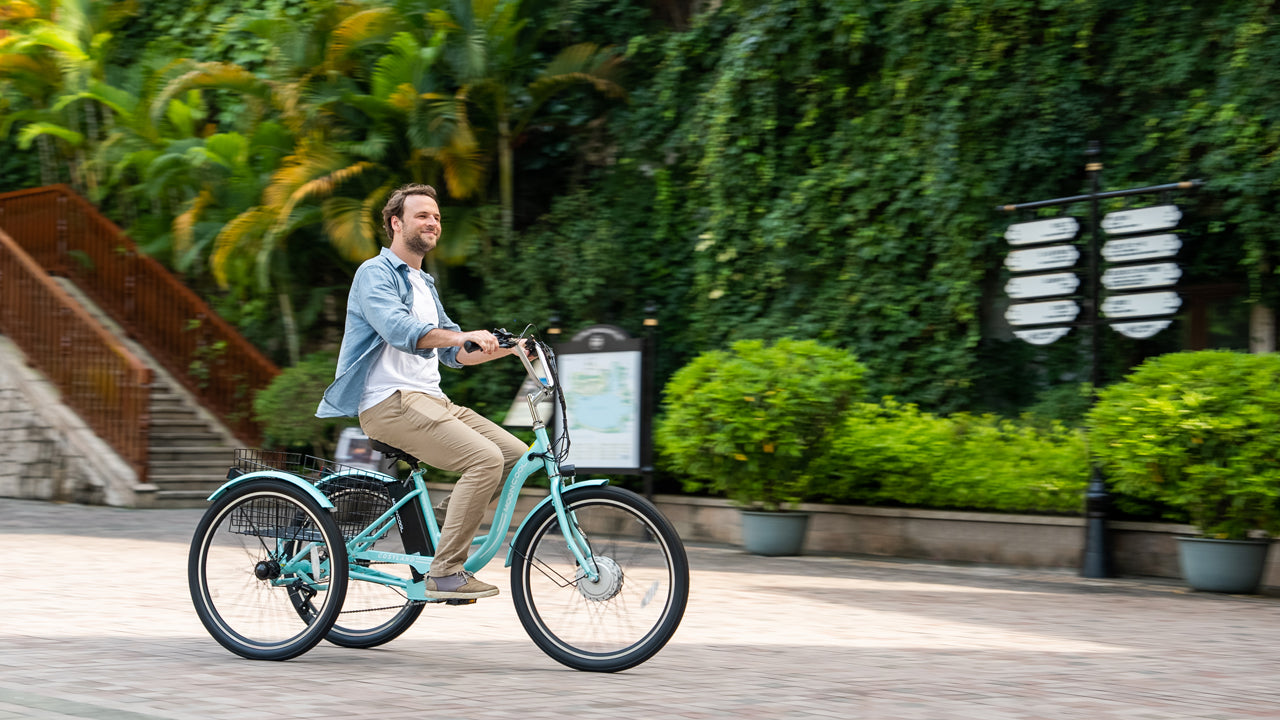Navigation
- Electric Trikes vs Traditional Trikes Comparison Sheet
- The Benefits and Drawbacks of Electric Trikes versus Traditional Trikes
- How to Identify the Ideal Trike for Your Circumstances?
- Conclusion
As the inclination towards sustainable and practical transportation alternatives surges, electric trikes have increasingly gained momentum.
However, how do these modern marvels measure up against their traditional counterparts? To aid your decision-making process, this article delves into the core characteristics of both electric and traditional trikes. We will explore their respective strengths and potential challenges to facilitate a well-informed choice that aligns with your specific requirements.
Additionally, we'll delineate various scenarios highlighting when each type might be optimal.
Electric Trikes vs Traditional Trikes Comparison Sheet
| Category | Electric Trikes | Traditional Trikes |
|---|---|---|
| Cost | Higher purchase price | Lower upfront cost |
| Range | Up to 80-100 miles per charge | Unlimited |
| Environmental Impact | Lower emissions | Manufacturing/disposal higher impact |
| Maintenance | Battery charging and occasional replacement | Basic mechanical maintenance |
| Physical Exertion | Pedal assist reduces effort | Requires more rider effort |
| Ideal Use Cases | Commuting, recreational rides | Budget choice for short rides |
| Traffic Navigation | Compact for maneuvering | Larger size can be trickier |
| Parking Incentives | May qualify for reduced parking fees | No parking perks |
| Customization | Wide range of models, can accommodate disabilities | Fewer custom options |
| Touring Ability | Pedal assist helps with challenging terrain | Rider needs high fitness for touring |
| Self Reliance | Need charging infrastructure | No reliance on charging points |
| Weight | Heavier with motor and battery | Lighter without electricals |
| Accessibility | Open up cycling to people with limitations | Require moderate fitness levels |
The Benefits and Drawbacks of Electric Trikes versus Traditional Trikes
Both electric and traditional trikes possess unique attributes and challenges. Below, we dissect the major factors to consider in your decision-making process:
Electric Trikes

Strengths:
- Pedal Assistance: Electric trikes come equipped with an assisting mechanism, easing your navigation across steep terrains or longer distances.
- Environmentally Friendly: They emit no pollutants, resulting in a minimal ecological footprint.
- Long-term Economic Viability: While initial expenses may be steep, the reduced fuel and maintenance costs can accrue significant savings over time.
- Versatility: Given the various styles and configurations, electric trikes can cater to diverse uses.
Challenges:
- Higher Initial Investment: Electric trikes typically command a higher purchase price relative to traditional trikes.
- Limited Range: Battery capacity governs the travel range of electric trikes, potentially proving restrictive for extended trips.
- Battery Upkeep: Regular charging and periodic battery replacements are necessary.
Traditional Trikes

Strengths:
- Economical: Traditional trikes usually have a lower upfront cost compared to electric variants.
- Simplicity: The absence of motor or battery results in fewer maintenance components.
- Unlimited Range: You can cycle as far as your physical fitness allows without any concerns about battery life.
Challenges:
- Absence of Pedal Assistance: Traditional trikes lack the assisted pedaling provided by electric trikes, making them potentially more strenuous for some riders.
- Greater Environmental Impact: While they produce no emissions during operation, the manufacturing and disposal of their components may carry a larger environmental toll compared to electric trikes.
How to Identify the Ideal Trike for Your Circumstances?
Choosing the ideal trike for your circumstances isn't a one-size-fits-all endeavor. Instead, it requires a careful evaluation of your specific needs, the intended use of the trike, and the environment in which you'll be riding. From commuting to touring, or as a mobility aid, different types of trikes cater to different circumstances.
1. Daily Commuting
For daily commuting, the advantages of an electric trike become significantly noticeable. Furnished with motorized assistance, electric trikes convert potentially strenuous commutes into seamless, effortless journeys. Opting for this environmentally-friendly vehicle not only helps minimize your carbon emissions but also contributes to substantial fuel cost savings over time. Key considerations when choosing electric trikes for commuting are:
- Alleviated traffic congestion: The compact form factor of electric trikes allows for efficient navigation through traffic, leading to time efficiency during high-traffic periods.
- Cost-Effective Parking: Globally, many urban settings are promoting the use of electric vehicles, such as electric trikes, by providing reduced parking fees. This incentive not only facilitates their use but can also contribute to considerable long-term financial savings for the us

2. Limited Mobility or Physical Stamina
Individuals dealing with physical limitations or lower stamina levels may find electric trikes to be transformative mobility aids. The motorized features significantly decrease the physical exertion required, resulting in a more leisurely, enjoyable ride. Noteworthy advantages of electric trikes for this group include:
- Enhanced Independence: Electric trikes offer a practical transportation solution, enabling users to move freely and independently, reducing the need for reliance on external help.
- Customization Potential: A wide range of electric trike models can be tailored to accommodate unique physical conditions, thereby ensuring user comfort and safety.
- Encouragement of Social Engagement: The accessibility provided by electric trikes allows users to participate in group rides or community events, thereby fostering social interaction and positively impacting mental well-being.
3. Extended-Distance Touring
When it comes to long-distance bicycle tours or adventurous trips across varied terrains, traditional trikes often emerge as a more suitable choice. Although electric trikes come with the advantage of motorized support, their operational scope is inevitably constrained by battery life. In this case, traditional trikes offer several distinct advantages for long-distance touring:
- Absolute self-reliance: Traditional trikes allow you to travel as far as your physical stamina permits.
- Lightweight Construction: Traditional trikes, in the absence of motor and battery units, are typically lighter in weight, which eases control and maneuverability.
- Route Flexibility: The non-reliance on battery charging points allows traditional trike users greater flexibility in planning their routes, leading to a more spontaneous and unrestricted travel experience.
Conclusion
The decision to opt for an electric trike or a traditional one largely hinges on individual needs and preferences.
Electric trikes score high on factors like convenience, environmental sustainability, and long-term cost-effectiveness. On the other hand, traditional trikes shine in terms of their affordability, simplicity, and unrestricted range. Thoroughly weigh the scenarios discussed above, along with the respective pros and cons, to make an informed choice that aligns seamlessly with your personal needs.
Read More
- Electric Trikes: The Perfect Hassle-Free Ride for Visiting Family!
- Why Electric Trikes are Perfect for Neighborhood Meetups and Friend Da
- Electric Trikes: Arrive at Summer Barbecues & Cookouts with Ease!
- Electric Trike Maintenance Tips: Keeping Your Trike in Top Condition!
- Electric Trikes vs. Traditional Trikes: Which Is Better for You?




Leave a Comment
This site is protected by hCaptcha and the hCaptcha Privacy Policy and Terms of Service apply.